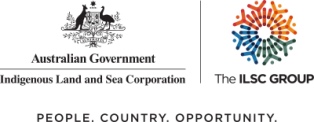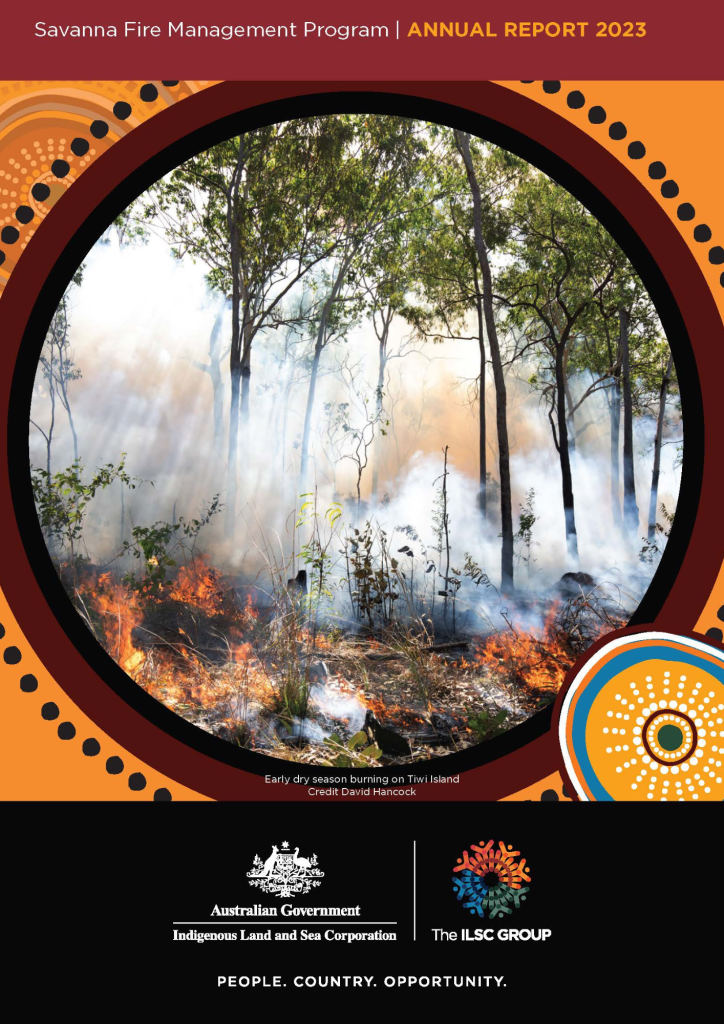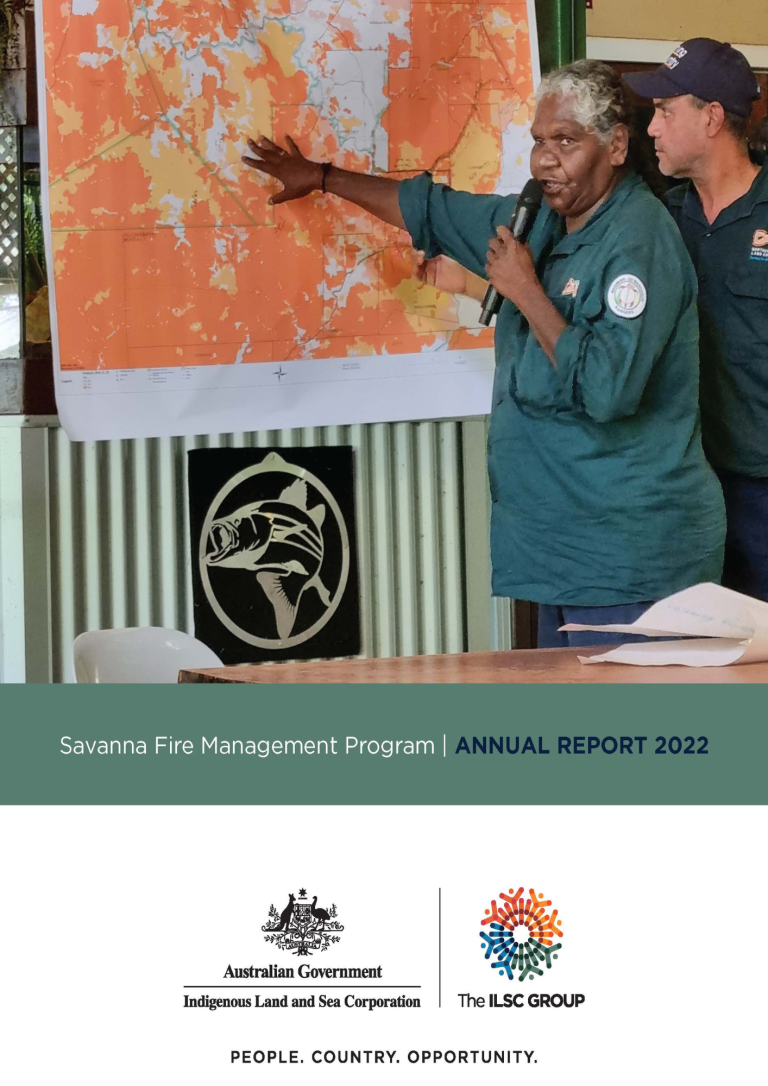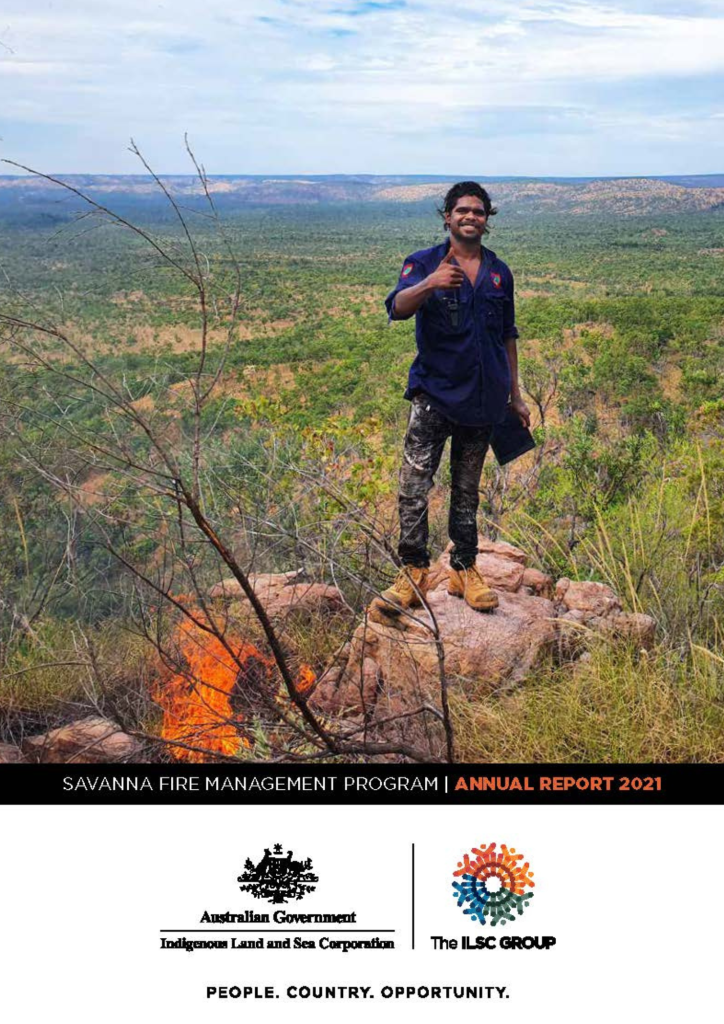Savanna Fire Management
The ILSC delivers the $34 million SFM Program in partnership with the INPEX-operated Ichthys LNG Project, fulfilling voluntary obligations to the Northern Territory Government by offsetting carbon emissions from the project’s onshore facility. This funding supports Indigenous Australians to establish carbon businesses that use traditional fire management practices to generate carbon credits.
Introduction
The Savanna Fire Management (SFM) Program is a funding initiative that provides approximately $2 million annually for 18 years. The program was launched in 2016 to support coordination, training, start-up, and early operational costs for new projects on Aboriginal Lands in the Top End of the Northern Territory. The program reduces entry barriers for Indigenous groups – who often have limited business development and employment opportunities – and facilitates the commencement of a carbon business.
Tropical savanna fires in Australia are responsible for over 4% of the country’s greenhouse gas emissions. Uncontrolled wildfires during the late dry season can cause significant harm to the environment and cultural sites, as well as release substantial amounts of greenhouse gases.
By implementing traditional fire management practices developed over thousands of years, Indigenous Rangers strategically set small fires during the early dry season. This not only helps protect Country and cultural heritage but also reduces greenhouse gas emissions enabling carbon businesses to be established along the way.
Currently, a quarter of Traditional Owner groups in northern Australia participate in the carbon economy, with many deterred by high start-up costs. The SFM Program plays a vital role in providing the necessary funding to establish new carbon projects.
Savanna Burning Methodology
Savannas in northern Australia are prone to late-season fires that result in large, intense fires producing a large amount of greenhouse gas emissions. The savanna fire management methodology utilised by these projects aim to minimise greenhouse gas emissions by reducing the extent and frequency of these fires.
Fire management activities take place throughout the year, with planned burning occurring primarily during the early dry season using several methods including igniting fires from aircraft, vehicles, boats, or walking, depending on landscape features within the project area.
Other fire management activities include creating firebreaks and undertaking fire suppression in the late dry season. The specific type and timing of fire management activities depend on the project area’s location and local environmental conditions.
How does the program work?
The SFM program operates in two phases.
Phase 1
Focuses on evaluating a group’s ability to develop a carbon business and includes assessments related to capacity and capability to deliver savanna burning methodologies. This phase also involves conducting vegetation mapping and utilising online tools like ‘SavBAT’ to assess the project’s viability. Additionally, the group must register with the Clean Energy Regulator and undergo assessments and planning related to workplace health and safety. The evaluation process also involves checking carbon baselines, vegetation, and fire history to identify areas where improvements can be made through better fire management.
Phase 2
On-ground fire management work and the ability to produce ACCUs (Australian Carbon Credit Units) starts in phase 2. The activities funded during this phase include wages for rangers and coordinators, infrastructure such as ranger sheds, plant and equipment, safety gear, helicopter hire and sourcing experts to assist.
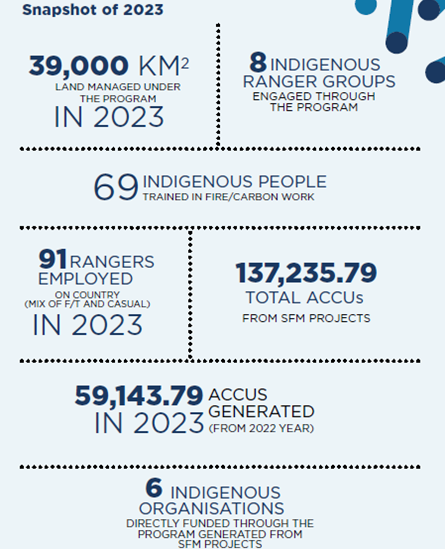
Savanna Fire Management Program: Annual Report 2023 [page 9]
Meet the Ranger Groups


Project Name: Judbarra/Gregory SFM Project
Land Trust: Bilinarra-Jutpurra Aboriginal Land Trust
Project Partners: Northern Land Council, Ventral Land Council, and Parks and Wildlife
Ranger Groups: Timber Creek & Wardaman Rangers (hosted by Northern Land Council) and Gurindji Rangers (hosted by Central Land Council)
Phase: 2

Project Name: Garawa SFM Project
Land Trust: Garawa Aboriginal Land Trust
Project Partner: Northern Land Council
Ranger Group: Garawa Ranges (hosted by the Northern Land Council)
Phase: 2

Project Name: Wardaman SFM Project
Land Trust: Menngen Aboriginal Land Trust
Project Partner: Northern Land Council
Ranger Group: Wardaman Rangers (hosted by the Northern Land Council)
Phase: 2

Project Name: Tiwi SFM Project
Land Trust: Tiwi Aboriginal Land Trust
Project Partner: Tiwi Resources
Ranger Group: Tiwi Rangers (hosted by Tiwi Resource Corporation)
Phase: 2

Project Name: Wagiman SFM Project
Land Trust: Wagiman Aboriginal Land Trust
Project Partner: Northern Land Council
Ranger Group: Wagiman Rangers (hosted by the Northern Land Council)
Phase: 1

Project Name: Western Top End SFM Project
Land Trust: Daly River Port Keats Aboriginal Land Trust
Project Partner: Thamarrurr Development Corporation Limited
Ranger Group: Thamarrurr Rangers (hosted by Thamarrurr Development Corporation)
Phase: 2
Resources
Contact Us
If you have questions or would like to provide feedback, please email NorthernStrategicProjects@Ilsc.gov.au.
